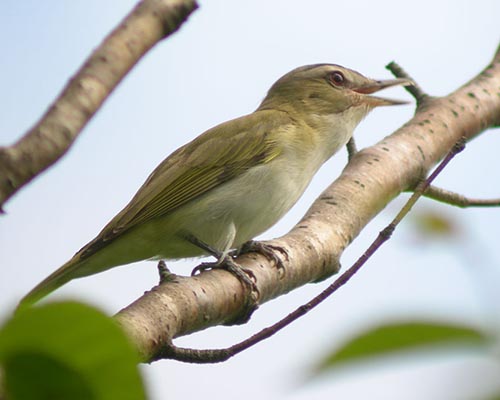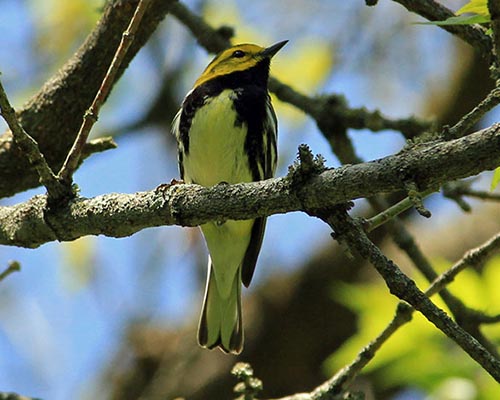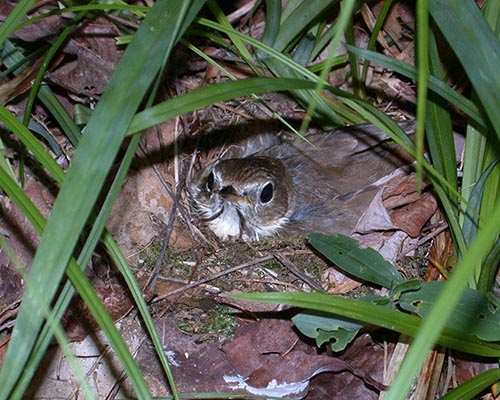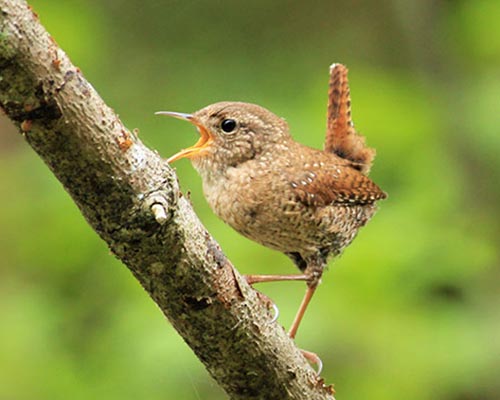The Adirondacks are home to a number of migratory bird species. Every spring these birds leave their winter homes in warmer regions in order to feast upon the many insects present in the Adirondacks during the summer months. They breed here during the summer. By the winter, they and their offspring are ready to migrate south again.
Migration is a dangerous undertaking. It requires a great deal of energy to fly long distances, and mortality due to predation and other causes is high. It is driven primarily by food availability. Species migrate because they need an adequate food supply to feed themselves and their offspring, not simply because they find the Adirondacks pleasant in the summer. However, migration is becoming more difficult for many species. Human-caused threats such as power lines, tall buildings, domestic cats and wind farms are increasing mortality. As a result, many important habitats for stopover, wintering and breeding are being destroyed by development.
To minimize dangers like predation, many birds migrate at night. We are all accustomed to seeing flocks of Canada geese migrating overhead (see the Waterbirds station); most of us are less aware of the flocks of smaller insectivorous birds that pass above us while we sleep.
Some of these birds, referred to as passage migrants, only stop over in the Adirondacks for a couple of days before journeying onward. Others, such as those discussed at this station, stay for the whole summer.
The red-eyed vireo (Vireo olivaceus) is a common and pretty bird that nests in the forks of the branches of broadleaf trees. It eats tree canopy insects such as caterpillars and aphids and will sometimes eat berries as well. Its song consists of simple hurried whistles sounding like “here I am” or “look up.” Those you see here will migrate to South America for the winter.
The black-throated green warbler (Setophaga virens) is easy to spot with its bright yellow face and black bib and is quite common in conifer and mixed woodlands. It eats insects and larvae from leaves and branches and nests in tree forks fairly near the ground. Its song is a persistent “zoo-zee, zoo-zoo-zee.” Most winter in Mexico, Central America or the West Indies.
The hermit thrush (Catharus guttatus) is an unassuming and somewhat shy bird, quite common but heard more often than seen. Its flute-like, minor key song sounds like “oh, holy holy, ah, purity purity eeh, sweetly sweetly.” It forages for insects in leaf litter on the forest floor and nests on the ground or low in trees. It winters in spots from southern New England to Central America.
Though very small in stature, the winter wren (Troglodytes hiemalis) is famous for its bubbling, complex song — especially its volume. It prefers dark conifer forests but can be found in many other habitats. It forages methodically for a variety of invertebrates, including insects, and nests in cavities in trees or banks, whence its genus meaning “cave dweller.” It winters across the southeastern U.S.
A persistent question about migration is: How do these birds find their way? The navigational abilities of birds are an active research topic, but it appears that they use a combination of visual landmarks, the direction of the sun, star compass and — most remarkably — magnetic fields.
Indeed, present evidence suggests that birds may be able to directly see the Earth’s magnetic field as some sort of visual manifestation. They generally follow flyways, standard migration routes that often follow mountain ranges or coastlines while avoiding large bodies of water. These routes are typically genetically programmed but can be modified though learning.




